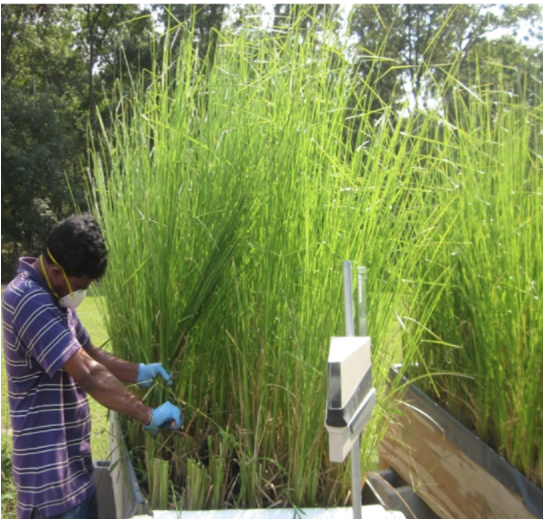A 15 mmol/kg concentration of EDTA was applied to enhance phytoremediation further. Overall, vetiver grass showed no signs of toxicity to EDTA or any of the lead concentrations. Soil, plant, and leaching samples were collected before and 20 days after EDTA treatment.
Before EDTA application, the root and shoot vetiver lead concentrations were 7.1-9.5 µg/g and 73-115 µg/g. After the application, lead levels increased to 29.15-56.71 µg/g and 125-221 µg/g for the San Antonio soils. The Stockton, New Jersey samples showed a similar result to San Antonio, with the vetiver performing better than fescue. Overall the EDTA application further enhanced the lead uptake in the root, increased translocation, and enhanced phytoremediation of the contaminated lead paint soil (Datta, Sarkar, and Andra).

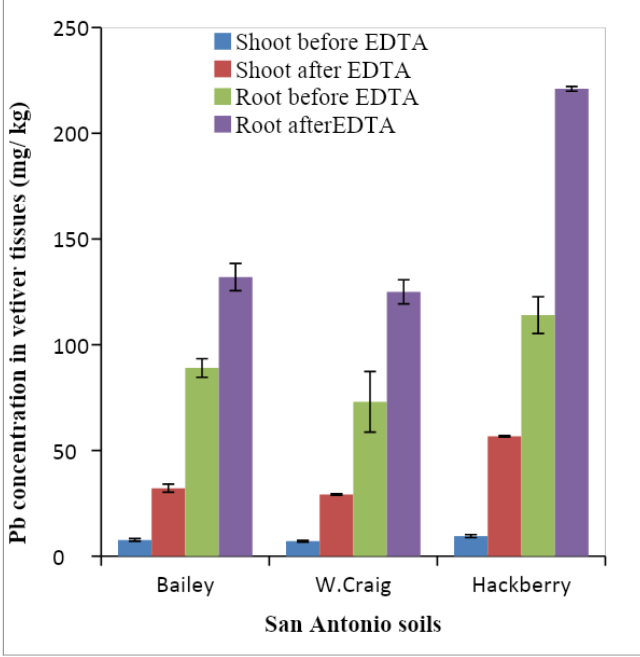

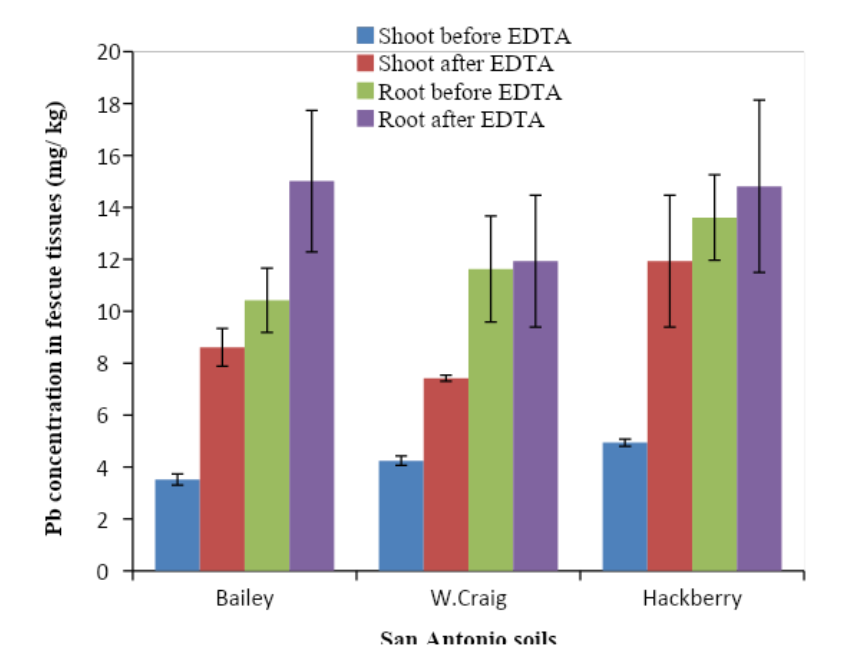
The leached samples showed that lead solubility increased with EDTA application. Soil lead concentrations were also analyzed. The results showed that in both San Antonio and Stockton that vetiver platforms had lower lead compared to fescue. Before EDTA, lead in San Antonio soils was 904-2152 mg/kg in vetiver and 995-2335 mg/kg in fescue. After the EDTA application, vetiver soil decreased to 872-1961 mg/kg and fescue to 980-2319 mg/kg (Datta, Sarkar, and Andra).
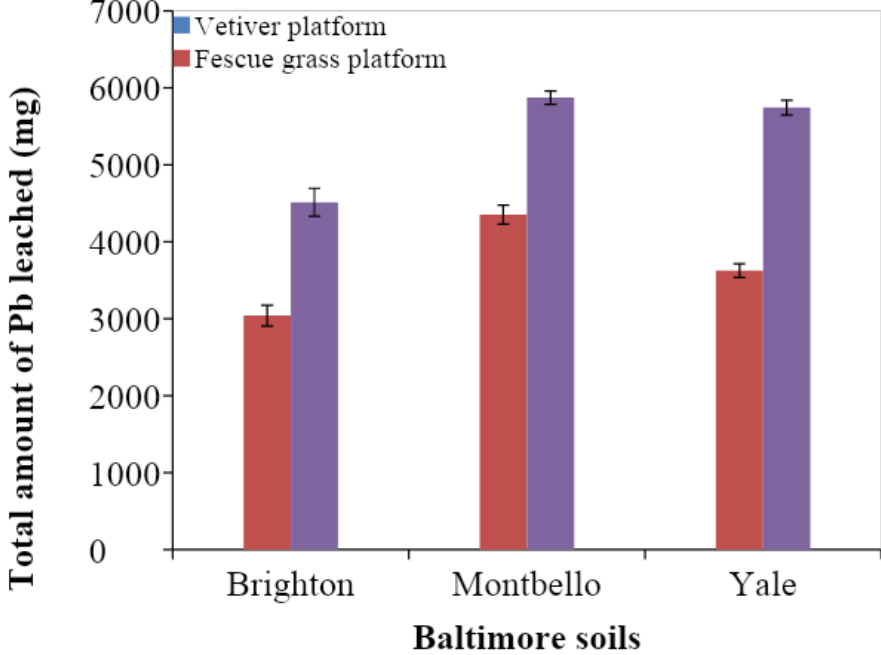
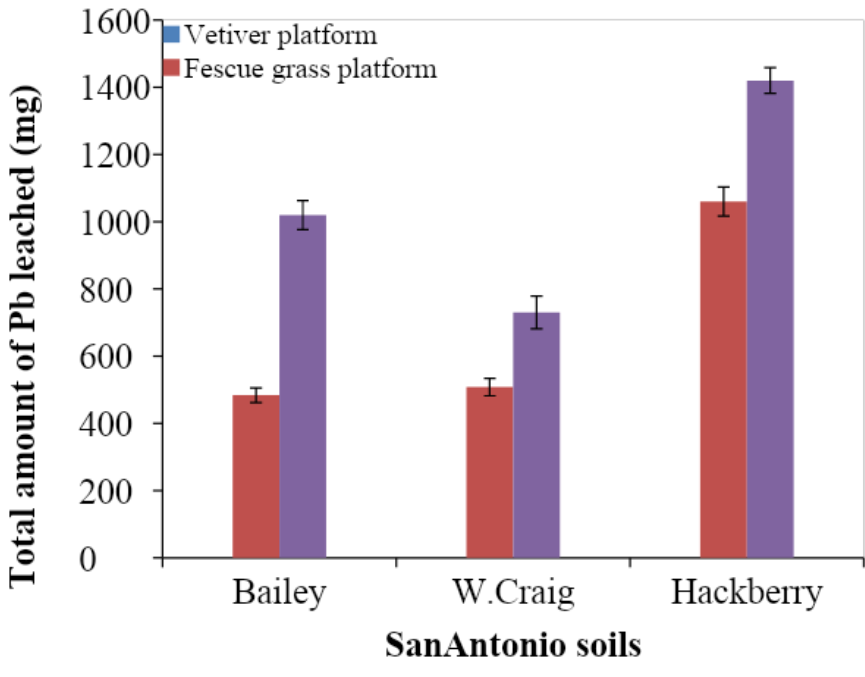
Before EDTA lead concentrations in vetiver soil, the Baltimore soils were 1034-1596 mg/kg and 1199-1802 mg/kg for fescue. After the EDTA treatment soil was 947-1529 mg/kg and 1150-1755 mg/kg (Datta, Sarkar, and Andra).
The vetiver plant samples were then harvested and composted following the EDTA treatment. The results show that lead leaching from the vetiver plant samples was lower than the USEPA limit (Datta, Sarkar, and Andra).
